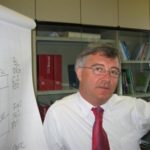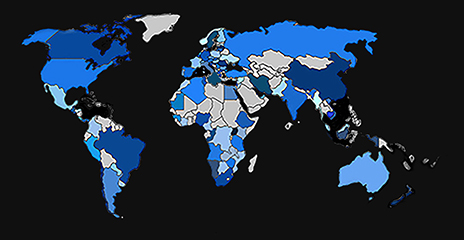
DUBAI/LONDON Top OPEC oil exporter Saudi Arabia has told the producer group it will not attend talks on Monday with non-OPEC producers to discuss limiting supply, OPEC sources said, as it wants to focus on having consensus within the organization first.
The Nov. 28 meeting in Vienna was planned to discuss the contribution that producers outside OPEC will make to a proposed supply-limiting agreement. OPEC oil ministers meet on Wednesday in an effort to finalize their deal.
"There is an official letter from (Saudi Arabia) saying (it is) not attending the meeting because the ministers should agree to the cut and then present the agreement to non-OPEC countries," an OPEC source said. "This will be more effective."
The Organization of the Petroleum Exporting Countries is trying to cement a preliminary September agreement in Algeria that would reduce its production to between 32.5 million and 33 million barrels per day, its first supply curb since 2008.
OPEC aims to remove a supply glut and prop up oil prices, which at below $48 a barrel are less than half their level of mid-2014. Oil prices extended an earlier decline on Friday after news of the Saudi no-show.
The organization also wants non-OPEC producers such as Russia to curb output. Russian Energy Minister Alexander Novak on Thursday said OPEC had proposed that non-OPEC cut oil production by 500,000 bpd.
Monday's talks will be converted into another OPEC-only meeting, OPEC sources said, to try to resolve the group's internal differences before the ministerial gathering on Wednesday.
A similar OPEC and non-OPEC meeting in October resulted in no specific pledges from outside producers to cut output, with attendees citing the lack of an internal OPEC agreement.
Saudi Arabia had asked that this earlier meeting be called off, but was convinced by other members to attend in order not to embarrass the group, a source said.
Source: REUTERS

Roberto Doná is a business professional with a long experience in Management Education and Management Consulting on a global scale and in particular in the China market.
In China since 2006 with a very well established network of relationships and a strong experience in managing cross border projects, he has also a passion for technology and innovation in general.
The broad experience in several international markets (USA, China, Argentina, Russia, Bulgaria and most of the western European countries) combined with all his professional skills and expertise makes his capabilities in leading international processes a fact!
The industries in which Roberto has the most relevant experiences in both education and consulting are: fashion & luxury, automotive, renewable energy, food & beverage and IT based services.
One main responsibility is to originate and manage consulting projects in China for both International and Domestic Chinese Companies.
Roberto Donà is a highly qualified Business Adviser with a special track record. He joined CBA Cross Border Associates in Shanghai as Consulting Professional in October 2016, and is the first CBA Associate in this enormous market.
Roberto is also Professor of Practice (International Business School Suzhou @ XJTLU), passionate in teaching management related topics. In particular the fields of interest and expertise include: Internationalisation Processes, Management of Technology, Strategy and Leadership.
He speaks English, Italian, and can communicate in Mandarin.

For a new company the first months are crucial to position itself in the market. Quick results are desired but time is limited to deal – amongst other things – with all the organizational aspects of a new office. Nonetheless the office ought to be fully equipped, functional and ready to be used from day one, as well as providing your company with a competitive appeal and it should also offer conference rooms equipped with latest technology and an attractive reception area.
At EZLA all investment costs and unanticipated organizational tasks that are not directly related to your core business are reduced. In addition, the selected office area can be expanded at short notice, as needed. This facilitates the adjustment of the office space according to your business’ growth. Obviously it is also possible to reduce the size of the selected office space aligned to the requirements of your business, so the cost will be incurred only for the area your company is actually demanding.
We strive to be the most important European platform for small to medium sized enterprises from Latin America. In order to promote trade and cultural exchange as well as to facilitate the location of Latin American companies in Europe.
We connect local key experts with small to medium sized enterprises from Latin America and combine this network with practical service and a first class infrastructure.
Access to a local network of experts
Virtual and physical offices
Information & networking events
Marketing & promotion
Support in all kinds of business opportunities, cross-border transaction, corporate real estate, M&A (Mergers and Acquisition advisory), technology transfer, joint ventures, and more

by Dr.-Ing. Edmund Wagner
Over the last 20 to 25 years, CO2 has become familiar as a greenhouse gas (‘climate killer’) that is expected to raise average temperatures on earth between 2 to 10 degrees in the next fifty to one hundred years (cf. reports by the Intergovernmental Panel on Climate Change (IPCC) and the Potsdam Institute for Climate Change Research, Prof. Schelnhuber).
The utilization of CO2 as raw material for the chemical industry and for the manufacture of fuel is a ubiquitous topic at the moment, in contrast to the sceptical discussions a decade ago. Removing CO2 from exhaust fumes and instead directing it underground (carbon dioxide capture and storage) shall protect the environment. Moreover, fossil fuels are being used in smaller quantities and the lifespan of these fuels is being stretched out.
Precedents for our process of utilising CO2 include the processes for making biodiesel using biomass from canola oil (in Europe), soybean oil (the USA), and palm oil (East Asia). Biodiesel is not actually diesel oil but rather fatty acid methyl esters (FAME) with engine performance characteristics similar to diesel oil. These are the first-generation biofuels.
Biodiesel was regarded as the fuel of the future 10 to 15 years ago and producers were generously state subsidized. Since then, however, these companies have almost all disappeared as state support has been withdrawn, largely due to the fact that the use of edible oils has come to be seen as ‘unethical’. Furthermore, these first-generation biofuels could never replace fossil fuels as the amount of bio-oil that would be required is not attainable. Roughly half of Europe would have to be planted with oil crops in order to supply Germany with biodiesel.
Thus the aim has been to produce so-called second-generation fuels from agricultural residues such as straw, leaves, oil cake, and waste wood. Firms such as Choren and Bioliq gained prominence, as well as the somewhat less well known MME and other companies. Major corporations such as Shell and Siemens held shares in Choren which they quickly sold off again, however, with the consequence that Choren has meanwhile gone into bankruptcy. The Karlsruhe firm Bioliq (KIT) was financially more robust and its plant is still in operation. In contrast to Choren, Bioliq anticipated the production slowdowns that would result from the fact that the raw materials are labour-intensively and seasonally collected and harvested from the fields. Bioliq thus came up with the idea of using pyrolysis to produce a pre-product (a biocrude oil: ‘bioliqSynCrude’) at several different locations throughout the plant which would then be collected in tankers and brought to the main Bioliq operation, where this crude oil would be go through final processing.
Processes for manufacturing these so-called second-generation biofuels all involve biomass being made into pre- and intermediary products in order to produce fuel from the synthesis gases CO and H2 by means of the Fischer-Tropsch synthesis (FTS). The major disadvantage of these second-generation bio-processes lies not with the processes themselves but rather with the procurement of biomass (straw, wood residue, etc.). Additionally, plants that are too large, such as in the case of Choren and Bioliq, have areas that are too large in relation to the meagre energy-rich raw material that must be collected and offloaded. Apparently, a single lorry load of straw produces barely enough petrol for a car to travel from Frankfurt to Basel. Perhaps this assessment is exaggerated, but the problem is clear nonetheless. The processing of these mainly dirty and extremely heterogeneous biomass materials, which take five to seven stages of processing, is too labour-intensive.
These second-generation processes are further criticized for being too heavily dependent on conventional energy (from fossil fuels). Self-generated energy should also be introduced throughout the operation. Furthermore, the pilot plants to date have been much too large and too centralized, with the result that the collection areas for biomass and the transportation distances cannot be effectively managed. The firm MME was the only firm to use small, decentralized plants with correspondingly smaller collection areas for the biomass but because of a lack of financial support, MME no longer exists. It seems that the MME plant was not impressive enough for the funding bodies. One should thus have televised inauguration ceremonies for such endeavours, for an international audience, regardless of what happens later.
One must therefore regard second-generation biofuel plants as obsolete and outdated, however much they are discussed in the newspapers and television. A research institute in Karlsruhe was in fact considering a scientific contract to analyse wood residue in the entire Black Forest in order to calculate the amount of woody biomass Bioliq plants could expect to have, and within what timeframe. It is important to keep in mind that while the Black Forest certainly contains enormous amounts of decayed and refuse wood; this is because no one is concerned with collecting it. But if this wood residue is exhaustively harvested (as happened between 1945 to 1950), it takes years before it is present again in similar quantities.
The so-called renewable energy sources must be included in such observations, despite this unscientific term: it is known that energy cannot be renewed. It is only possible to transform energy (into other forms of energy). The current predominant renewable energy sources are wind energy, solar energy, and geothermal energy. The well-known drawback to both wind and solar energy is that they are only available for limited periods and then only in varying intensity. Geothermal energy has the downside that, currently, it can only be harnessed at particular sites (and there are rather few) and is not available everywhere.
Wind energy has been extensively developed in the form of several thousand wind turbines, found in northern Germany in particular. A major misconception in the w
ay in which wind energy is presented to the public concerns the statement that ‘x’ amount of wind power is installed at a particular site, making up between 15 to 20 per cent of total electric output. From this information, one believes that out of 100 kWh consumed, 15 to 20 per cent is derived from wind energy while the remaining 80 to 85 per cent is supplied by fossil fuel energy from RWE, Wattenfall, or E-on. One does not realize the fact that ‘installed capacity’ is at stake. Installed capacity means that a wind turbine creates, e.g., 18 kW, but only under optimal wind performance. Most of the time, however, the wind either blows at less than optimal power or it does not blow at all. Statistics suggest that one can expect about 23 per cent of installed capacity to be achieved. This means that not even a quarter of the installed capacity actually ends up in the network. Thus the network gets barely 3 to 5 per cent of wind output (not 15 to 20 per cent), and at times when the energy might not be needed or is shut off. Additionally, kW (output) and kWh (work=power) are often confused. However, we pay for work although we need output. Output is work per unit of time.
This means that fossil fuel power plants essentially do not need to worry about competition from renewable energy sources. Besides this is the fact of funding measures. On one side, fossil energy forms such as electricity and fuel are heavily taxed and assessed with levies. In contrast, renewable energy sources receive considerable funding—in the form of feed-in tariffs in the case of solar power, to mention just one example. There are also CO2 credits, which are not taken into account in popular cost calculations, although industry certainly does.
There are furthermore so-called green energy tariffs, which will be offered by some companies. The customer might imagine that when he switches to a green energy provider, he immediately begins consuming ‘CO2-free’ power (CO2-free schnitzel also exist). In actual fact, he is getting his power, just as before, from the closest RWE power plant, since the electrical power outlet remains connected to the same main power source in the building as before. On closer inquiry, he discovers that a certain percentage of the electricity costs will go towards ‘using green energy’. This percentage is nothing other than the discount that the ‘green energy supplier’ receives from RWE as a wholesale purchaser; a portion of which discount it pockets for itself.
It is interesting that Germany is the worldwide leader in the renewable energy source areas named above. On the one hand, there are opinion-making processes in Germany but on the other hand the requisite money for developing these renewable energy sources. There is no question therefore that natural gas, petrol, and coal, as fossil fuels, are approaching an end phase even though no one can say with certainty when that point will be reached. It is certainly not the case that one day the global supply of petrol will suddenly run out. The backlash will make itself felt for decades (even today). The calculations made by ASPO, the Association for the Study of Peak Oil, concerning ever-decreasing resources are well known. ‘Peak oil’ means that when the point of maximum oil production is reached worldwide, demand must drop off. This theory is hotly debated, especially the timeframe. The point of peak oil has allegedly already been reached or is just around the corner. Closer consideration of this theory, however, suggests that the moment of peak oil was already reached 10 years ago and has been steadily adjusted since then. What is clear, however, is that fossil reserves are on the decline and are finite. The interpretation of ‘proven reserves’ and ‘conjectured reserves’ varies greatly, leaving much room for debate.
The multinational oil companies take the position, at any rate, that the known oil reserves will last at least 100 to 150 years. The conjectured reserves will last another 200 years. It is important to note, however, that the major reserves, so-called giants, which were exhausted 50 years ago, could only be extracted to circa 35 per cent. The remaining deposits, deep underground, can only be brought to the surface using elaborate measures such as natural gas injection or CO2 injection and even then only a small percentage of the remaining oil can be recovered. Above all, it is a question of money and investment and how much one is willing to pay for extracting more oil—which depends on the price per barrel. A price of US$ 200 per barrel would doubtless make deposits that have not yet been extracted profitable. A price of US$ 40 per barrel wouldn’t.
This means that the term ‘peak oil’ allows another interpretation: one based on oil barrel prices. Experts say that we currently have sufficient oil if it is priced at more than US$ 250 per barrel; but if the price were US$ 50 per barrel, supplies would have been exhausted long ago. The impact of oil prices suddenly shooting up to more than US$ 150 per barrel is something we already experienced, in 2008. The entire global economy went off the rails and even countries like Iceland suddenly found themselves heavily indebted. The question arises about what happened to the high earning of the oil nations, within weeks or even days. The earnings were all invoiced in US dollars that were registered by the Federal Reserve Bank in New York. The surplus of more than US$ 1.7 trillion went to U.S. banks, in particular to the Lehmann Brothers. Such extraordinarily massive sums create indebtedness for a bank as deposits are debts on the other side of the balance sheet. A bank that is otherwise healthy can quickly go bankrupt, as was the case with the Lehmann Brothers. The bank could have been helped with state funds, but Bush had rejected this option as he knew that the money came from the oil nations in the Middle East. Lehmann Brothers faced insolvency within a matter of days and all the oil money vanished in the biggest Bush trick in decades. Naturally no one speaks of this, especially not the oil states as they do not wish to acknowledge such a disgrace. Since then, there have been no more sudden oil booms and there will be none in the future. Oil barrel prices in the last three years have remained constant between US$ 85 and 110, to eventually fall below US$ 40.
As outlined above, the bio-oil industry producing first and second-generation biofuels contributed to its own downfall by not paying attention to the economic environment around it. One is always in danger of becoming a victim of financial support, which is difficult to turn down. A recent example is the solar power industry, which became too dependent on funding measures although the effect subsidies have on market distortion should have been apparent, along with the fact that funding can be withdrawn at any moment. The first mistake which the solar power industry made was to neglect research and development into increasing the efficiency and effectiveness of solar power, even though research institutes such as the Fraunhofer Institute for Energy Systems had already made inroads. One should have known that competition with China could only be met with the results of intensified research. The solar industry continued to produce the same solar panels as earlier, even though these had also begun to be mass produced in China. In addition, the German state had concentrated on subsidies for the installation of solar panels, without regard for where the panels had been produced, whether in Thüringen or in China. For the homeowner and the installer, it was irrelevant where the panels came from. The German suppliers of solar collector panels rarely succeeded in obtaining the public tenders. The second mistake made by the solar power industry was to concern itself with the product only until it left the factory. It should have thought about the consumer market. Ultimately the federal government is also to blame in focusing too strongly on installation covered by federal subsidies rather than concentrating on the industry and its research organs, which, with the financial help of the government, produced research findings at the expense of the government.
The production of fuels on the basis of CO2 as a carbon fuel has already been realized in first- and second-generation trials, although the difference was that the extraction of CO2, or more precisely CO, was achieved using natural photosynthesis. The synthesis gases CO and H2 are commonly known since the 1920s as the bases for the Fischer-Tropsch synthesis (FTS). The illumination gas (or coal gas) commonly used in households until after the Second World War was primarily composed of CO and H2, i.e. synthesis gases that were produced from coal in coking plants. Until the 1940s, Germany’s industrial ‘Ruhrgebiet’ consisted mainly of coking plants that were associated with coal mines; the coke was needed for blast furnaces. Petrol was produced from coke gas prior to and during the war, mainly in the city of Leuna. To an extent, the war would not have been possible without the Fischer-Tropsch synthesis, since the nations with oil reserves did not permit gas to be sent to Germany. The war came to an end when Leuna was destroyed. As gas and petrol made from coal became too expensive after the war, natural gas and oil was imported from the USA initially and then from Saudi Arabia (from Aramco). The Fischer-Tropsch synthesis hence dropped out of use, except in South Africa, where the South African Synthetic Oil Limited (SASOL) firm continued to use the process (first developed in Mühlheim) as a safeguard against the threat that Allies might stop the delivery of fuel from the oil nations because of Apartheid. South Africa hoped to avoid this ‘extortion’ by applying FTS, and this is why South Africa has the most experience with FTS today.
Observing in the case of Choren and Bioliq the high cost of the multiple procedures involved before one can achieve the Fischer-Tropsch synthesis in the process of second-generation biofuels, one is forced to ask whether one can produce fuel without incurring such enormous time and labour costs, i.e., by using CO and H2. However, CO cannot be made without a process using either coal or another photosynthesis material such as straw, wood, etc. Thus the method should instead involve CO2, which is virtually the same as CO. CO2 has the advantage that it exists in greater quantities, and is an environmentally damaging gas that accrues with every technical procedure that requires energy, above all in power stations where electricity is produced. For these reasons, it occurred to us to search for a way to manufacture fuel using not just CO and H2 but also CO2 and H2.
Such speculations were dismissed as absurd by top-profile experts in the chemical industry in 2005 to 2007. However, I did not let go of this idea, whose potential I believed in, and I found support in a PhD dissertation by a Dr. Riedel, who completed his PhD at Karlsruhe University in 2002, supervised by Prof. Schaub. Riedel’s dissertation examined CO2 reactions under the conditions of the Fischer-Tropsch synthesis. The next turn of events was my undertaking practical training in catalysis at the Leibniz Institute for Catalysis in Berlin-Adlershof, since I felt that my understanding of this field was somewhat shaky. By happy coincidence, after this training, I came into contact with Prof. Baerns, with whom I was able to discuss my ideas about CO2 and H2. Although I did not realize it at the time, Prof. Baerns was for many years the director of the Leibniz Institute in Berlin. Our discussion lasted several hours and the most important thing Prof. Baerns said to me was: ‘You are beginning to persuade me’.
Since then, we have carried out an extensive R&D research project at the Leibniz Institute for Catalysis (LIKAT) in cooperation with our partners in Portugal; it came to a successful conclusion, with the result that we have several catalysers that lead to good conversions of CO2 and H2. It is possible to successfully produce fuel using a direct synthesis of CO2 and H2. An extensive patent registration based on the major LIKAT report has been made.
Where to go from here? Given the strong scientific findings and research position, the next step should be to build a pilot plant where different types of processes and various steps in procedures could be tested. This plant should be more than a laboratory plant but much smaller than a production plant so that costs are kept down and most importantly so that it remains flexible.
Ideally, one would work with someone who designs and constructs plants and with whom one might possibly cooperate, since his or her experience could be very useful for such a pilot plant. In any case, our aim is to develop not a large commercial production plant but rather something small and decentralized, since the consumption of fuels such as petrol and diesel is invariably decentralized, worldwide. An interesting possibility might be the so-called small-scale systems that fit inside a container. Such container plants have already been built by firms like Evonik (Evotrainer) and Bayer/Invite. The purpose of these types of construction is to build a basic model, for example, for producing 500 litres of petrol per hour—which is the average amount of petrol consumed at a filling station. If someone wants to produce 1,500 litres per hour, then he doesn’t receive a newly conceptualized system but rather three of these 500-litre systems. The plants would be built in a series and held in stock, and would be able to be installed everywhere (similar to a heating system for a high-rise building, for example).
These plants will use as natural resources CO2 derived from combustion and H2 derived from electrolysis, while the energy will be supplied by electricity from renewable energy sources, i.e., from solar and/or wind power. The plant as a whole will consist of 1) electricity production; 2) the production of CO2 and H2; and 3) container systems for the production of petrol and/or diesel. Such a plant will be completely independent of other systems. As well, such a plant will for the first time produce fuel out of electricity. An alternative process can be seen at ZSW in Stuttgart (the Centre for Solar Energy and Hydrogen Research Baden-Württemberg), where they are working on energy storage in order to solve a general problem of renewable energy sources. Methane is stored in existing natural gas reservoirs, mixed with the natural gas found there, and then stored until electricity is generated from the methane using steam engines. Unfortunately, transportation to and from uses up energy, but the ZSW process is thoroughly interesting, since there is to date no way of storing electrical energy. For our part, we are using C5 to C15 fuel in place of C1 methane, as well as using petrol, kerosene, and diesel. In this sense, one could also talk about an energy reservoir. Nature needed millions of years, but we can produce fuel from electrical energy in just half an hour.
One problem concerns product prices. There is some apprehension at the moment that the fuels we are discussing are too expensive in comparison with the core costs of filling station–ready petrol and diesel. Presumably the break-even point would be a barrel price over US$ 200. However, fossil fuels are increasing in cost in any case, whereas our fuel can only become cheaper as technologies get more complex. This means that in the near future we will also require government funding, since the plants are in the public’s interest. Serial production and further development would contribute to making us more competitive. If extracting CO2 from air with the help of an appropriate system succeeds, then the operation of our plants would be entirely independent of subcontracted supplies; petrol and diesel could just as well be produced on an isolated island—today, given the current production and delivery systems, still an unrealized dream, but one that is, from the perspective of our plant technology, absolutely possible.
Wiesbaden, September 2016
Dr.-Ing. Edmund Wagner

Over the past years, the automotive industry has been showing steady market growth despite challenges. Global automotive car sales growth continued to run 89.5 million in 2015, with Europe recovering, and China, India and the US managing record sales. This figure is expected to rise to 100 million shortly.
There are only a handful of industries that show such an enormous and diverse potential and at the same time face such an array of economic and legal challenges as the automotive industry, whereas the electrification of the powertrain, the car digitalization and connectivity, and the autonomous and semi-autonomous driving are considered the most important aspects of this development.
Although currently only 0.5% of delivered cars are electric and merely another 3-4% are hybrids and other alternative powertrains (such as hydrogen fuel cells), their share will rapidly increase to 30% in the years to come. The Volkswagen Group, for example, is going to launch over 30 fully electric vehicles by 2025 and expects to sell two to three million pure electric vehicles per year. The main markets may be USA and China with US, Japanese, Korean and certainly German companies playing a major role.
New supply chain (and M&A activity) for batteries, charging stations, purchase and storage of energy, and generally all new technology and infrastructure, is expected, but at the same time traditional suppliers will probably lose revenues due to the decreasing demand for conventional car parts. While technology companies (and not car producers) will drive much of the market and earn the right to win, traditional suppliers and also traditional dealers and workshops will lose revenue. Wear and tear is expected to further reduce. Knowhow of workshops needs to reach higher sophistication.
The technology and software providers are also the key players in the digitalization (i.e. applications, infotainment and communication in the car) and the connectivity of the car with other cars and with its environment. While the technology companies and telecommunication network providers will largely benefit from the new technology applications as well, car producers may not necessarily participate in both earnings and user experience. Therefore, car producers already upgrade their sales models to create innovative and creative multi-format contact to the customer, and to lift brand experience and customer interaction on new levels.
As the purely legal aspects are concerned, deals in the digital world are quite different from the ones in the traditional sector, and in addition to the usual M&A aspects, participants will have to pay particular attention to such questions as valuation, talent retention, and deal integration. The main challenges in the digitalization and connectivity field still are data security, stability of the network, and speed of data.
Autonomous and semi-autonomous driving is another key milestone in the global automotive industry although properly working autonomous vehicles are unlikely to be commercially available before 2020. While traditional car producers focus on semi-autonomous vehicles, Apple and Google are already working on “stage 5” autonomous vehicles – cars without steering wheels and pedals, and mainly focus on getting access to and profiting from the time of the driver. Advanced driver assistance systems (ADAS) will play a crucial role in the transition period to prepare policy-makers, customers and business for the reality of the cars taking over control from the drivers.
Although globalization is practically over, the automotive market still offers opportunities for certain countries that are willing to create new own industry and give access to its markets, and to grant investment subsidies to companies relocating their production. Likewise, certain countries provide unique opportunities to the automotive industry (such as access to developing markets).
Despite the general trend, the automotive market in Europe faces new challenges after the Brexit. From a British perspective, the EU market remains highly attractive due to its political and economic stability, but the country will lose its unrestricted access to the single market and its ability to influence EU legislation in the automotive sector. On the other hand, it is in the interest of the EU to maintain access to the large UK market. As a whole, most car industry participants hope to keep the status quo before the Brexit.
By Dr. Michael Malterer, Legal Expert, Partner at Dentons - largest law firm in the world (Corporate, M&A, Private Equity)

Alan Royal is a Fortune 500 Operations and Technology Visionary. With degrees in Bachelors Computer Science & Information Systems, Bachelors Accounting, Bachelors Business Administration, Masters Emerging Market Management Practice, Alan has exceptional vision and execution, is a digital commerce thought leader, among others in leading enterprise technology operations, and in insurance/financial sectors.
Alan Royal is the professional consultant for M&A and other transactions in many industries and business areas, locally or cross-border.
Testimonials: Run Butterfied, EVP Meta Bank, report to the BOD of achievement: "Alan challenged the status quo of IT’s, and Meta’s, resource allocation, prioritization, and project management practices. He brought an experienced outsiders perspective that has created an enterprise-wide view of our projects and initiatives, positive change in meeting agendas and management practices, as well as a renewed focus on resource planning and prioritization"
John Harrison CEO & Vice Chairman New York Life International: "Alan's ability to evaluate situations, determine strategic and tactical solutions and implement are outstanding."

Very good interview on CBNC: China First Capital's Peter Fuhrman says China's capital market makes it difficult for domestic firms to readily access the cash needed for M&A.
With 2016 half over, China remains poised between its promising future and a more troubling, and troubled past and present.
The larger questions are coming into more intense focus: where will the flood of Chinese foreign investment be directed?

CBA Cross Border Associates is a global network of independent M&A Advisers, Legal and Tax Experts, and Consulting Professionals, with currently 112 Specialists in 64 countries.
The latest partner that joined CBA on June 16th, 2016 was Murray Robert Fulton from New Zealand. Welcome on Board: https://cba.associates/associate/murray-fulton/?pass_entry=pm02466

Over time, good-governance advocates have developed no shortage of remedies for failures of governance at businesses. However, good and bad companies alike have already adopted most of those corporate practices but improvements are still needed at many Boards to improve shareholder value particularly in times of changing, competitive, global market conditions.
The more “engaged form of corporate governance” and active ownership exhibited, typically but not always, by private equity Boards does provide us with some ideas as to how more traditional public and private company Boards could be more effective at delivering shareholder value. It is the combination of the clarity of purpose and the shorter lines of communication that enables private equity Boards to act quickly and without having to worry about next quarter’s earnings announcement (except for potential banking covenant issues). Moreover, being proprietors they are able to back their own judgment and move decisively.
A major responsibility of the Board is to ensure the viability and sustainability of a well-run business, are in accordance with the wishes of the shareholders. Boards must not be complacent and ensure that they continually receive relevant, accurate, timely and well-presented (actual and forecast) information from management so that the Boards can (i) have professional, results orientated, data analytical discussions with respect, trust and candour; (ii) apply their “judgement” to taking proactive and decisive decisions; and then (iii) clearly communicate their decisions to management so that there are no doubts in anyone’s mind what has been agreed and why.
Thinking beyond the status quo will be crucial for Boards to help their companies stay agile and competitive as they manoeuvre the rapidly changing business landscape, in terms of technology and economic and market conditions. It is also as important as ever for Audit committees, which continue to wrestle with heavy task loads, to stay focused on their core oversight responsibility—financial and operational reporting integrity so that good decisions can be based on good data.
The most involved, diligent, value-adding Boards may or may not follow every recommendation in the good-governance handbook. But if a Board is to truly fulfil its mission as (i) Advisor; and (ii) Oversight, the Board must both (i) receive timely, accurate and relevant information; and (ii) get The Human Element right which allows for a Professional, Results Orientated, Data Analytical, Decision Body to act with Respect, Trust and Candour.
By David Farrell, President of David Farrell Advisory Inc.
